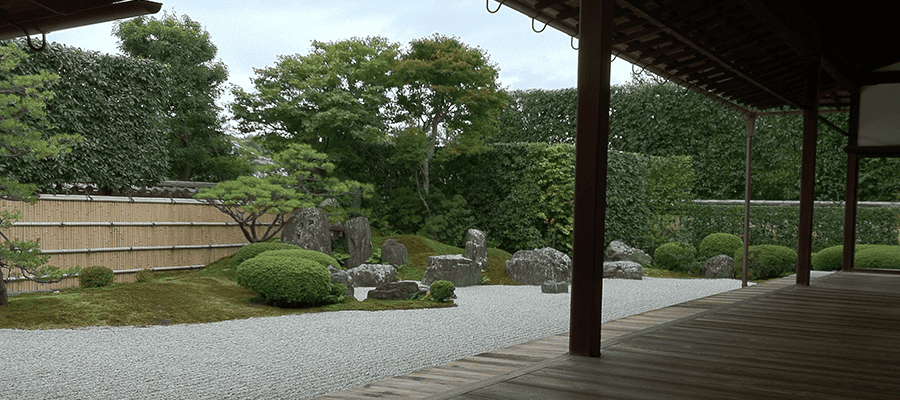Kohrin-in was founded in the Muromachi period (1336-1573) by Yoshifusa Hatakeyama,
and upheld by the faith of Sengoku-era warlords, including Maeda Toshiie. The buildings and gardens,
having escaped the ravages of war, quietly reflect a long history.
Daitoku-ji Kohrin-in Temple
History
HISTORY
-
 A Temple Founded at the Peak of the Hatakeyama Clan’s PowerKohrin-in is a sub-temple founded in the 1520s by Yoshifusa Hatakeyama, the military governor of Noto (present-day Ishikawa Prefecture). Amidst the turbulence of the Sengoku period, this Zen temple was established by powerful warlords to honor their ancestors, making it one of the finest examples of Muromachi-era Zen temples. After its founding, Kohrin-in continued to receive the devoted patronage of the Hatakeyama family, which played a key role in solidifying its foundations.
A Temple Founded at the Peak of the Hatakeyama Clan’s PowerKohrin-in is a sub-temple founded in the 1520s by Yoshifusa Hatakeyama, the military governor of Noto (present-day Ishikawa Prefecture). Amidst the turbulence of the Sengoku period, this Zen temple was established by powerful warlords to honor their ancestors, making it one of the finest examples of Muromachi-era Zen temples. After its founding, Kohrin-in continued to receive the devoted patronage of the Hatakeyama family, which played a key role in solidifying its foundations. -
 The Warlords Who Gathered at Daitoku-ji TempleAt this time, Daitoku-ji was a center of Zen, deeply revered by many powerful warlords. In addition to the founder, the Hatakeyama clan, the renowned warlord Maeda Toshiie was also involved in the restoration of Kohrin-in. Within Daitoku-ji, where these historical warlords entrusted their wishes, the temple miraculously escaped the ravages of war and still preserves its original form today.
The Warlords Who Gathered at Daitoku-ji TempleAt this time, Daitoku-ji was a center of Zen, deeply revered by many powerful warlords. In addition to the founder, the Hatakeyama clan, the renowned warlord Maeda Toshiie was also involved in the restoration of Kohrin-in. Within Daitoku-ji, where these historical warlords entrusted their wishes, the temple miraculously escaped the ravages of war and still preserves its original form today. -
 Buildings and Gardens that Reveal Stories of the PastThe buildings and gardens still standing at Kohrin-in today are invaluable testaments that convey the history of the time. The Main Hall and the Front Gate, which preserve the style of Zen architecture from the Muromachi period about 500 years ago, have been designated as important cultural properties by the Japanese government. Kohrin-in, through its buildings and gardens, preserves the history of the Sengoku-era warlords and the flow of time to the present day.
Buildings and Gardens that Reveal Stories of the PastThe buildings and gardens still standing at Kohrin-in today are invaluable testaments that convey the history of the time. The Main Hall and the Front Gate, which preserve the style of Zen architecture from the Muromachi period about 500 years ago, have been designated as important cultural properties by the Japanese government. Kohrin-in, through its buildings and gardens, preserves the history of the Sengoku-era warlords and the flow of time to the present day.